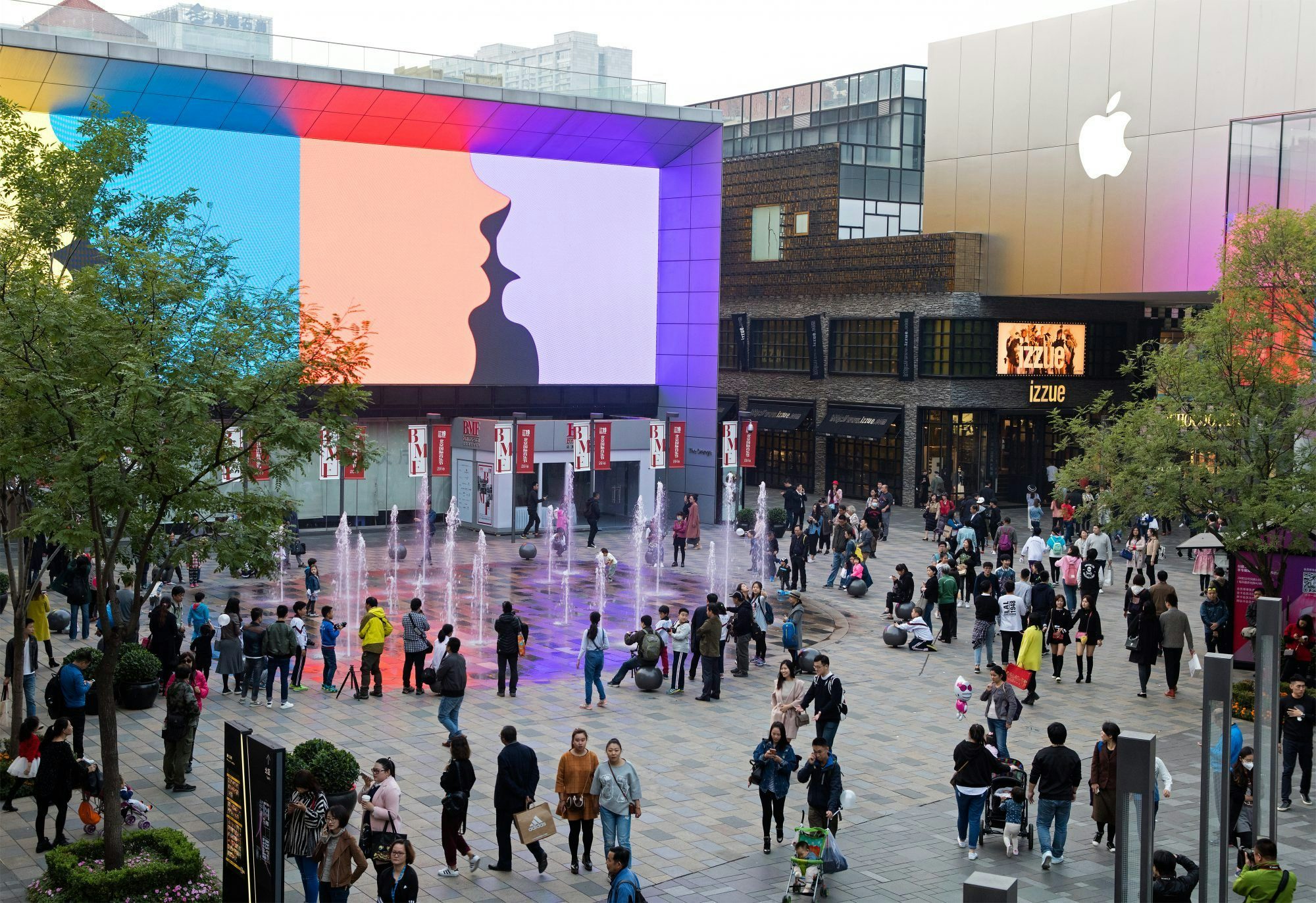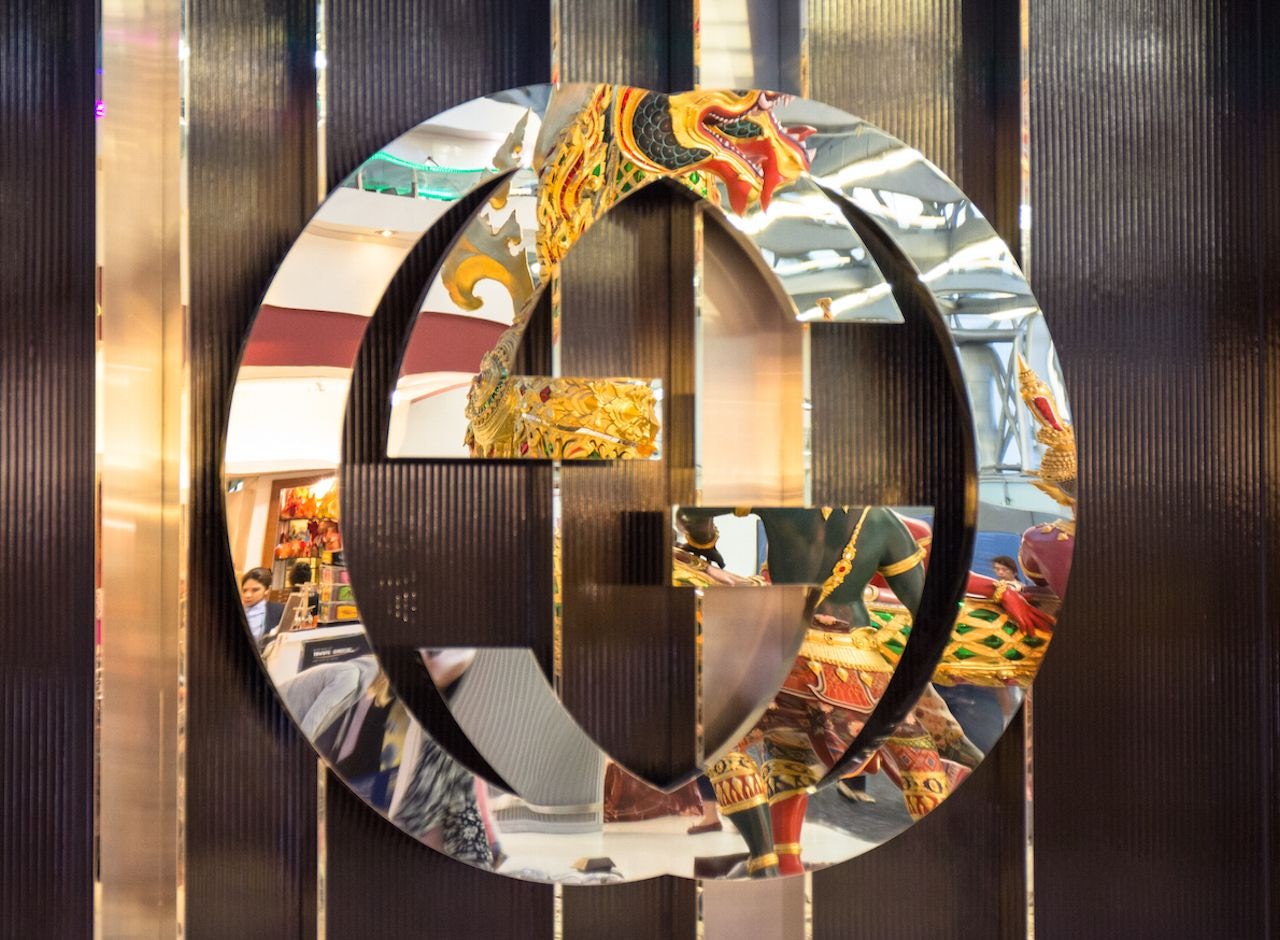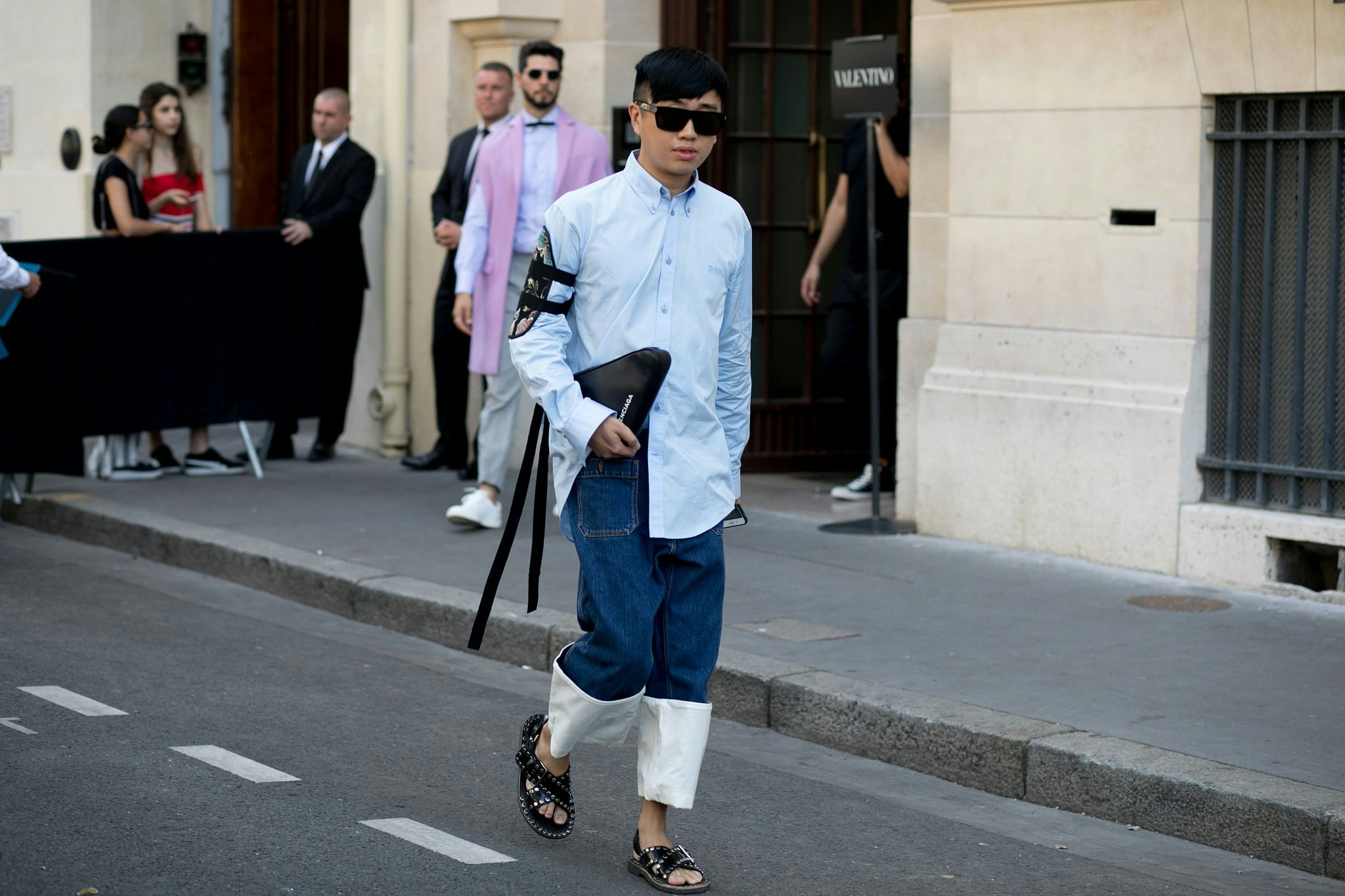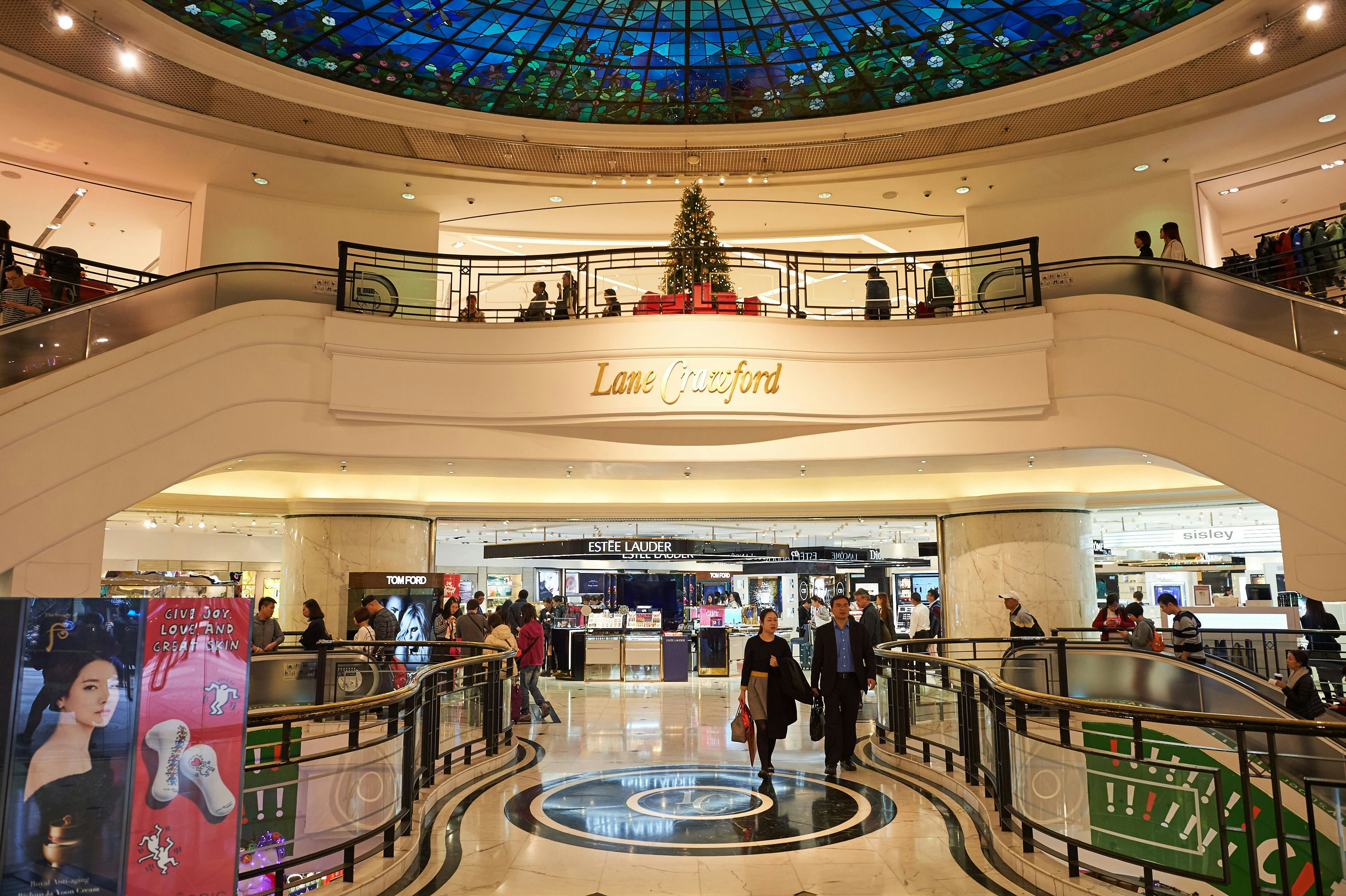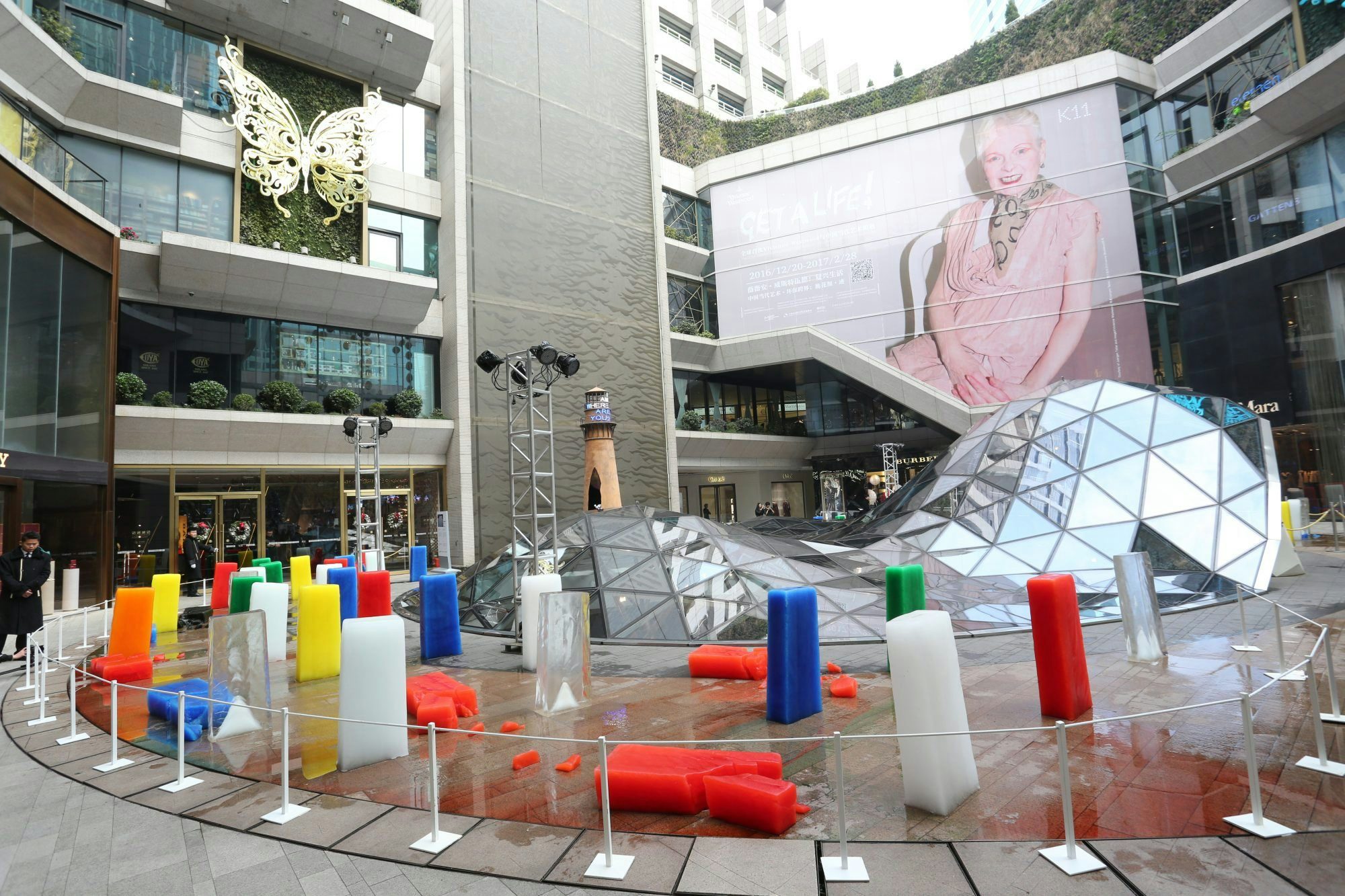As digital technology and e-commerce continue to noticeably shake up the traditional global retail industry, the business of shopping malls and department stores in China, has been going through a period of quiet transformation.
Over the past several years, sluggish sales and falling profits have led many players to leave the game, according to a recent report by the Fung Group’s think tank Fung Business Intelligence, which collects and analyzes market data on retail and technology.
Luxury brands on the hunt for sales growth have been testing the online space, especially e-commerce websites and the social media app WeChat.
The situation began to turn around slightly beginning in 2015 when Alibaba Group announced its “New Retail” business model, which attempts to create ground-breaking shopping experiences for Chinese consumers by connecting online and offline sales through the latest digital and logistics technology. This has had the effect of making brick-and-mortar stores suddenly relevant again for the retail industry, and given department stores the opportunity to revolutionize.
Fun Business Intelligence’s annual report on China’s department store sector, which was released in March, noted that 2016 was a critical year for this sector, with an increasing number of department store operators “actively exploring new business models and retail formats with online-to-offline (O2O) retailing as the cornerstone.”
For luxury brands looking to embrace the “new retail” initiatives and break into or expand into the new O2O high-end shopping mall market in China’s metropolitan cities (including Shanghai, Beijing, Guangzhou, Nanjing and Chengdu), here are eight high-level examples that are often earmarked by international luxury brands as the top go-to locations.
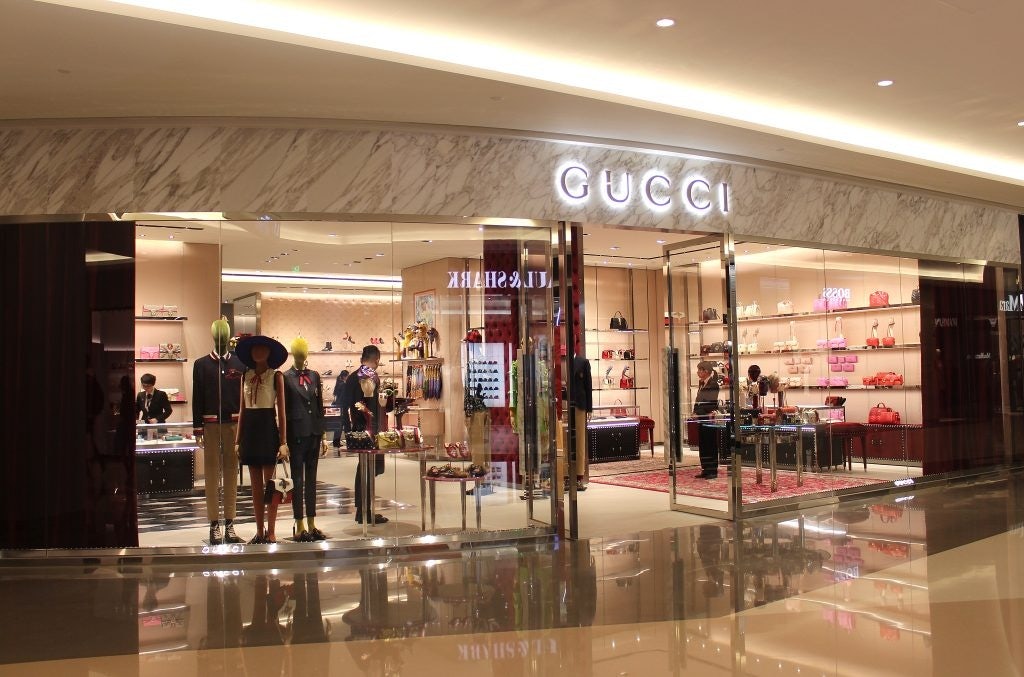
1. SKP Mall, Beijing#
The SKP Mall is one of the most popular high-end department stores in China’s capital city Beijing. Opened in 2007 by leading Chinese retailer Beijing Hualian Group in a joint venture with other investment groups, this boutique department store caters to high-end consumers with premium products. Over 60 percent of the mall's brand's are foreign fashion and luxury labels. SKP is highly lucrative Aiming to stay ahead of the curve and keep its consumers enticed, SKP's own buyer team frequently travels abroad looking for niche and designer brands to launch in China.
Examples of luxury brands it works with#
:
Phillip Lim, Alaia, Alexander McQueen, Audemars Piguet, Balenciaga, Berluti, Bottega Veneta, Burberry, Cartier, Chloe, Dior, Self Portrait, Opening Ceremony, and more.
O2O movement#
:
Thanks to its popularity and profitability, many luxury brands choose SKP Mall as an offline location to debut new products in China. For example, handbag guru Mr. Bags has hosted a number of fan meet-and-greets in collaboration with brands such as Fendi and Prada at the mall. Brands and fashion bloggers will promote events like this on their social media channels, effectively directing interested consumers to the store. SKP Mall also moved its membership management system to WeChat so followers of its official account can manage their membership benefits there. The account also offers a brand locator and information on the latest events and sales.
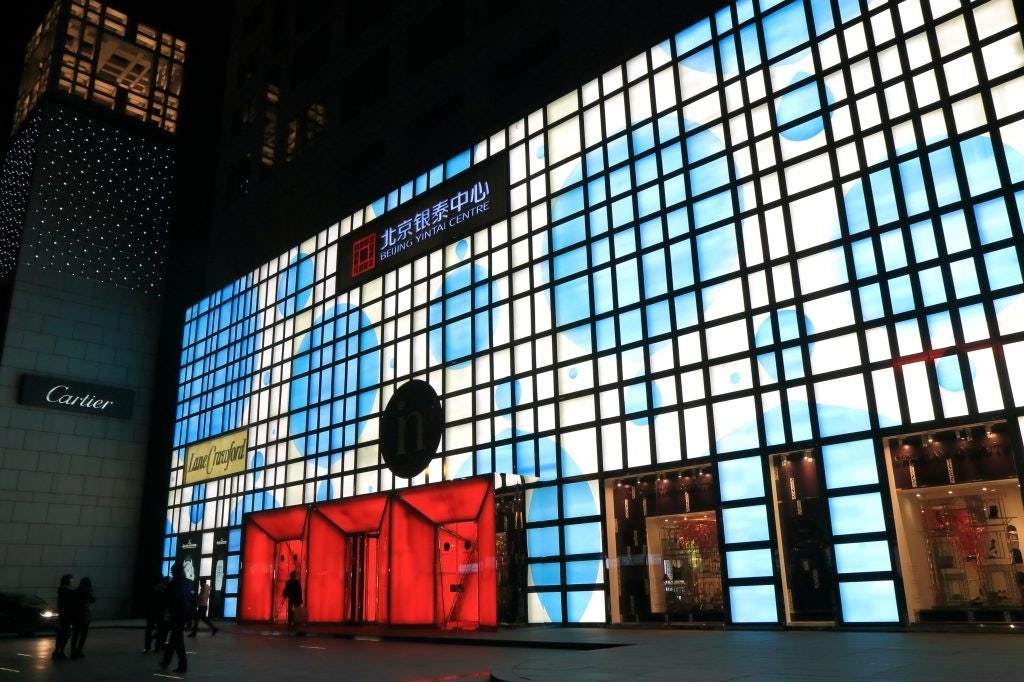
2. Yintai Department Store, Beijing#
Located within Beijing's landmark shopping complex Beijing Yintai Center, this upscale store has attracted flagship stores from a great number of luxury brands in recent years. In 2017, the mall's developer, Intime Retail Group, formed a partnership with China's e-commerce giant Alibaba Group, which privatized the company and acquired all of it physical infrastructure in China.
Examples of luxury brands it works with#
:
Bottega Veneta, Cartier, Dolce & Gabbana, Ermenegildo Zegna, Giorgio Armani, Hermes.
O2O movement#
:
Yintai Department Store in Beijing, along with other stores owned by Intime Retail Group, began its O2O transformation as early as 2013 in collaboration with Alibaba. The physical stores welcomed several small domestic brands promoted by Taobao, the online shopping site operated by Alibaba Group. In addition, the physical stores added Alibaba's one-stop shopping feature and joined Alibaba's location-based mobile app "Miao Street." Lately, the group has also achieved price harmonization between Yintai's online offerings (its Tmall flagship store) and those offline.
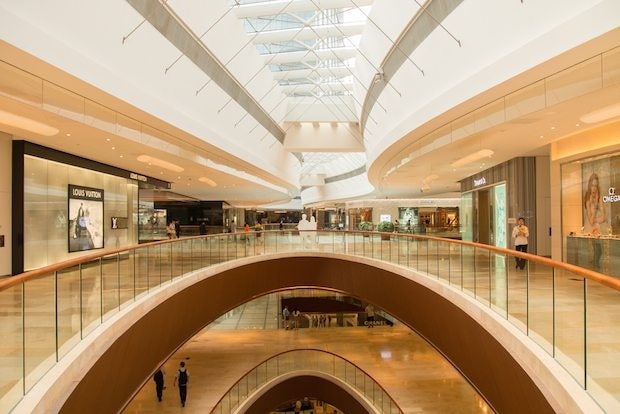
3. Taikoo Hui Shopping Center, Guangzhou#
Taikoo Hui Department Store is located within the multi-use commercial and entertainment complex that is owned and managed by the Hong Kong-based property company Swire Group. It opened in 2011 as one of Swire Group's iconic properties in mainland China. The store currently has nearly 200 brands, many of them internationally known, making it one of the top high-end department stores in the city.
Examples of luxury brands it works with#
:
Burberry, Chanel, Cartier, Miu Miu, Moschino, Prada, Valentino, Dior, Dolce & Gabbana, Fendi, Gucci, Givenchy, Hermes, and more.
O2O movement#
:
Guangzhou Taikoo Hui Shopping Center has also made efforts in ushering into the "New Retail" world to create a seamless shopping experience for Chinese consumers. It manages the customer relationship and membership system, named "Elite Club" on WeChat. Store members can log into their personal profile and manage activities by following the link provided on Taikoo Hui's WeChat account. Visitors to the mall can also find a parking spot in advance or book a staff to park their cars on WeChat. The store also frequently promotes its offline events on WeChat to attract visitors.
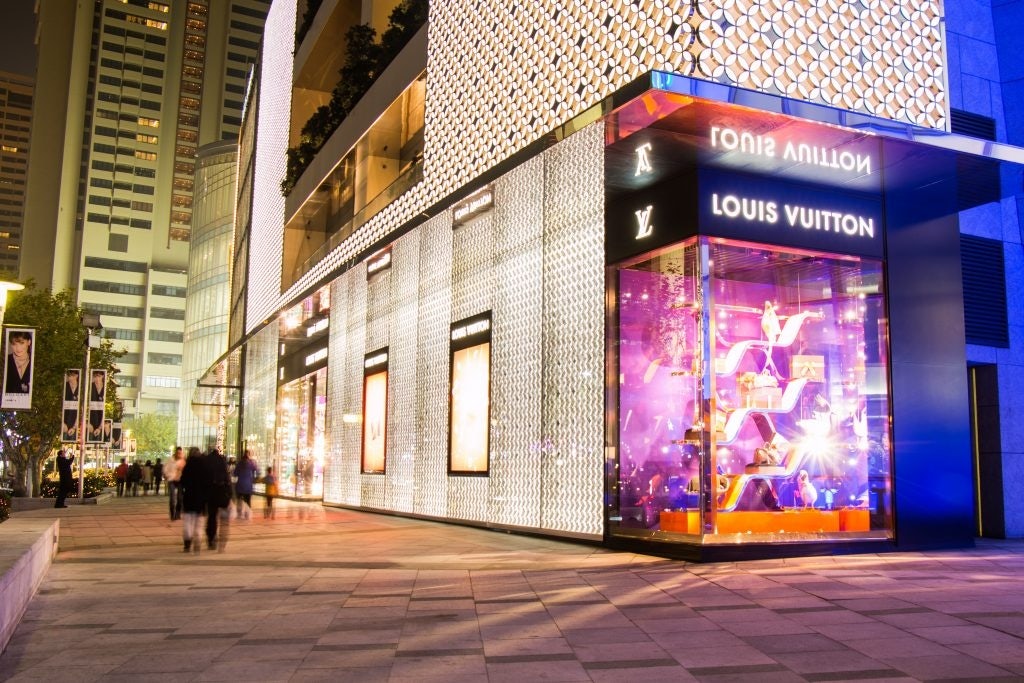
4. Plaza 66 Shopping Center, Shanghai#
Plaza 66 Shopping Center in Shanghai, owned by Hang Lung Properties, is regarded as the benchmark of the Chinese luxury market. Located at Shanghai's busiest commercial area, Nanjing West Road, Plaza 66 Shopping Center has attracted many luxury brands who chose the mall as the site of their first flagship store in mainland China.
Examples of luxury brands it works with#
:
Baccarat, Bally, Balmain, Brunello Cucinelli, Céline, Cartier, Goyard, Hermès, Hublot, Jaeger Lecoultre, Jimmy Choo, La Perla, Loewe, Mikimoto, Chiara Ferragni, and more.
O2O movement#
:
Plaza 66 has taken many steps toward an O2O transformation. On its official WeChat, followers can check for available parking spots and pay for parking. Like many other department stores, consumers can totally manage their membership relationship on the app. The account also releases information on new products, collections and brands so consumers can keep track of it all without going to the store.
On WeChat, there is a special section called "shopping on hand (掌上逛)," where Plaza 66 hopes to create a virtual shopping experience that feels like visiting the mall. In that section, consumers have access to the events calendar for Plaza 66.
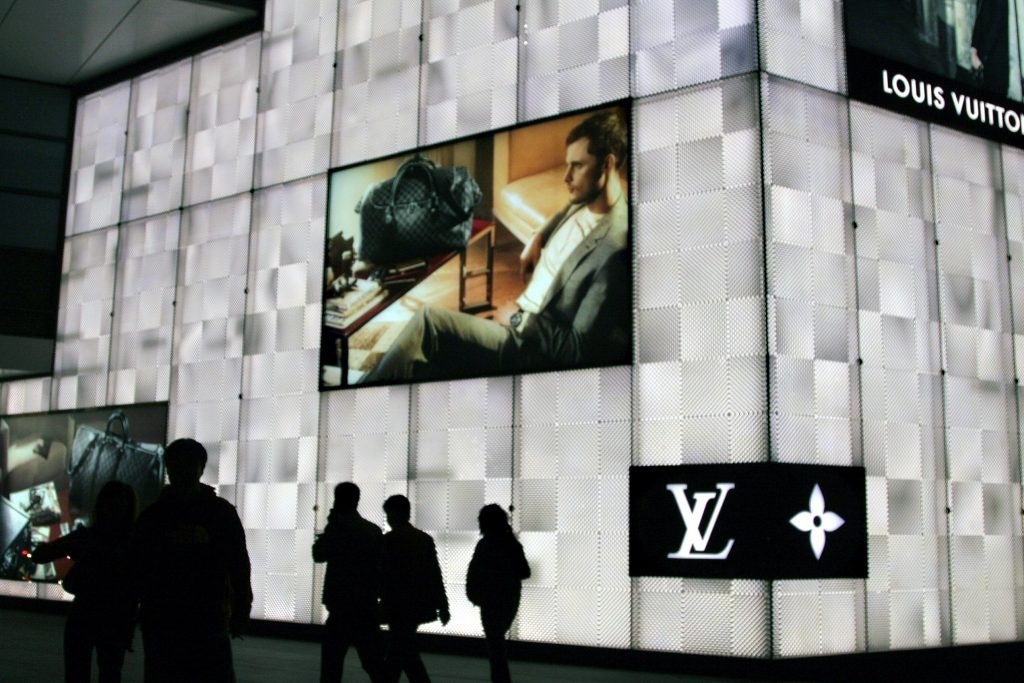
5. Lane Crawford Department Store, Beijing, Shanghai, Chengdu#
The Hong Kong-headquartered specialty department stores Lane Crawford has expanded into mainland China to ride on the rapid growth of the luxury industry in the country. It currently owns over 800 fashion and lifestyle brands around the world.
Examples of luxury brands it works with#
:
Vetements, Valentino, Sacai, Stella McCartney, JW Anderson, Dior, Giambattista Valli, Chloe, Prada, Proenza Schouler, and more.
O2O movement#
:
Lane Crawford has certainly led the way in embracing the "New Retail" business model in China. With a well-organized WeChat service account, the department store has also recently released a shopping mini program on the app, where Chinese consumers can browse through all of its offerings and directly place orders.
In addition, Lane Crawford has an e-commerce store offered in Mandarin. Customers can place the order on the site, then either choose it to be delivered or put on hold for in-store pick-up. And if they want to return an item, Lane Crawford's staff will come to their door and pick it up. Moreover, consumers can also book an appointment for a personal stylist on the website and meet them in the stores.
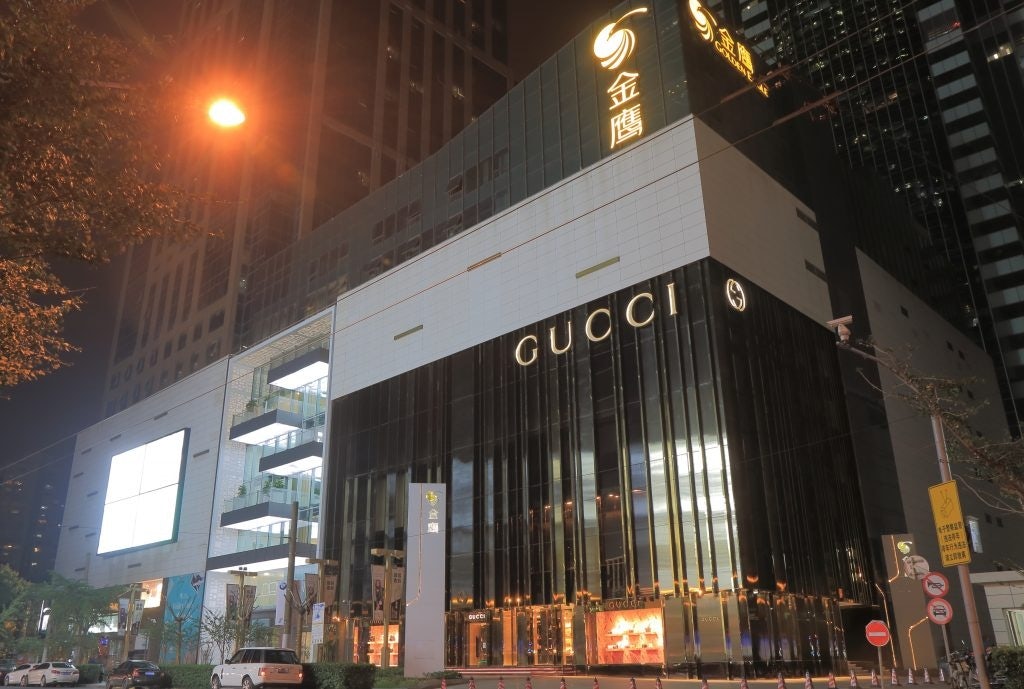
6. Golden Eagle International Shopping Center, Nanjing#
Golden Eagle International Shopping Center is one of the major commercial complexes owned by the Nanjing-headquartered retail giant—Golden Eagle Retail Group. The department store chain has positioned itself as a fashion and luxury goods provider. It regularly releases internal fashion magazines called "GE MODE" to clients. On its official website named "Fashion Golden Eagle," readers can receive the latest news of the store's offerings.
Examples of luxury brands it works with#
:
Givenchy, Lancome, Dior, Valentino, Hugo Boss, Balenciaga, Guerlain, Clarins, Folli Follie, Furla, and more.
O2O movement#
:
Under the leadership of Golden Eagle Retail Group, the department store has responded quickly to consumers' digital needs by launching its shopping app in May 2015 to cover over 6,000 stock keeping units (SKU). On the app, consumers can also manage their membership activities and online orders and find a store.
In 2016, according to Fung Business Intelligence, Golden Eagle has integrated the customer information stored in all of its servers, which includes retail stores, mobile apps, WeChat and the membership card, in order to provide customers with a seamless shopping experience.
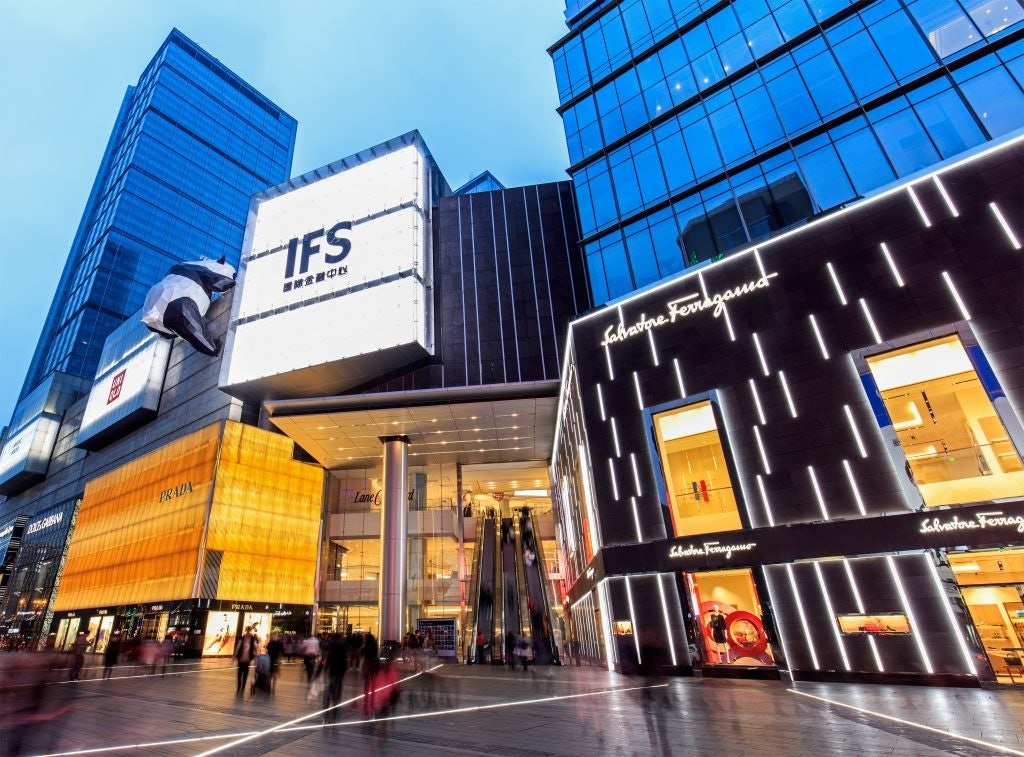
7. Wharf International Financial Square (IFS), Chengdu#
Launched in 2014 by Hong Kong-based property company The Wharf Holdings in Chengdu's busiest pedestrian shopping area, IFS soon became the city's landmark building where wealthy consumers could purchase luxury products at home. As a latecomer to Chengdu, IFS is still in the early stages of attracting international brands. So far, it has nearly 300 international brands selling there, with more than 100 of them entering the southwestern part of China for the first time. The latest example is the French upscale trunk and luxury leather brand Moynat.
Examples of luxury brands it works with#
:
Chanel, Dior, Dolce & Gabbana, Fendi, Louis Vuitton, Prada, Salvatore Ferragamo, Balenciaga, Giuseppe Zanotti, Loro Piana, MCM, Mulberry, Tory Burch, Van Cleef & Arpels.
O2O movement#
:
IFS has been relatively slow at pursuing O2O initiatives, probably because it was late to the high-end retailing market, compared to other department stores mentioned in this article. Its official WeChat account functions more like an information channel rather than a service account.
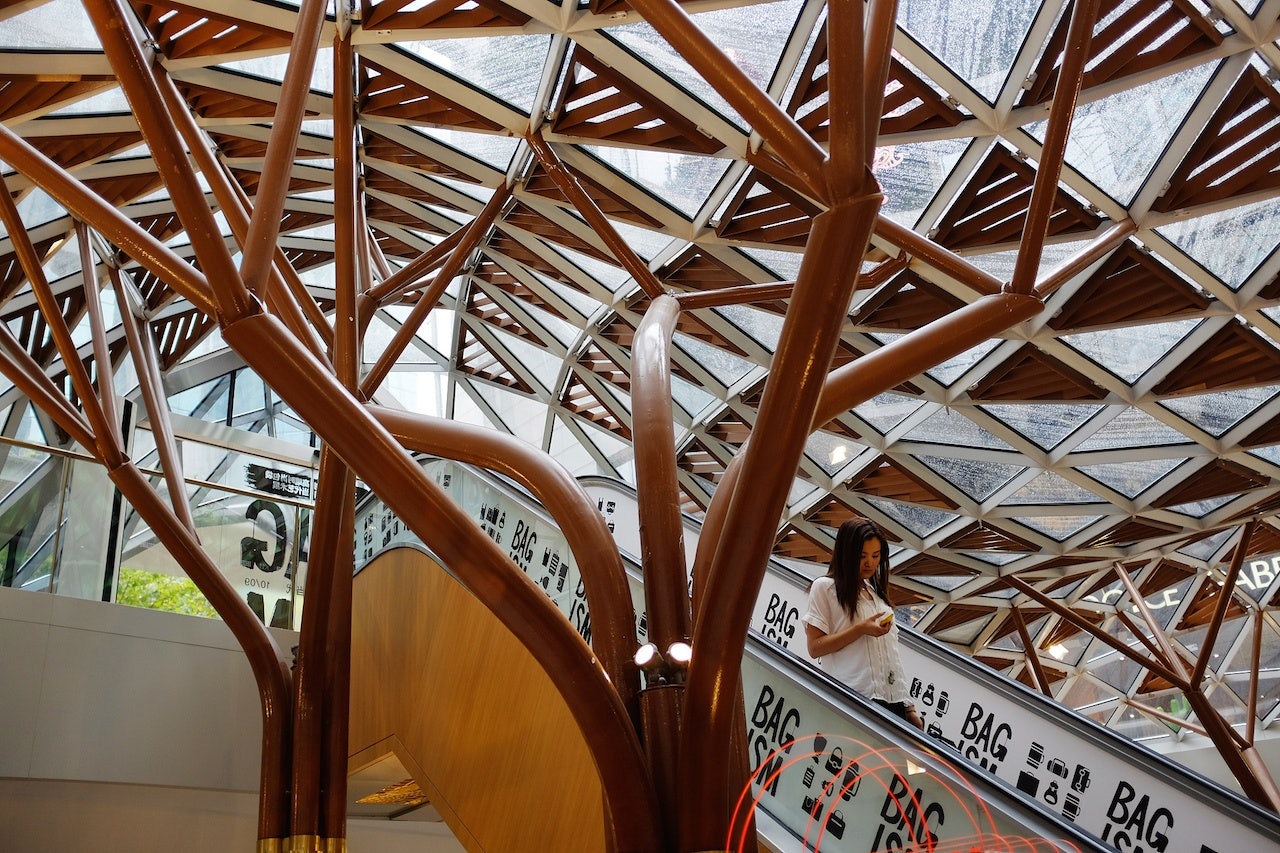
8. K11 Art Mall, Shanghai#
K11 Art Mall is the first luxury and art shopping mall in mainland China. Founded by the young Hong Kong-based billionaire Adrian Cheng in 2013, K11 attempts to revolutionize the luxury retail landscape in China through incorporating art exhibitions and stores that sell art and artful objects. Cheng is bullish on the trend that Chinese luxury consumers will be increasingly interested in the art world and would like to experience it even while shopping. This novel retail concept has proven to be successful in China, especially among millennial consumers as the bond between luxury and art is one naturally and easily made. In addition, the chance to purchase the exclusive editions of collaborative designs between luxury brands and artists is also a big plus.
Examples of luxury brands it works with#
:
Burberry, Chloe, Dolce & Gabbana, Vivienne Westwood, Red Valentino, Bally, Max Mara, Love Moschino
O2O movement#
:
The three-year-old K11 Art Mall has adopted the philosophy of O2O operation since the beginning. The art shopping mall hosts interactive events that feature art appreciation and cultural practice all year long, delivering curated shopping experiences to all visitors. K11 also has a WeChat account that is instrumental for directing consumers to shop online. Followers can not only manage their membership relationship and receive updates on events and products, but also purchase goods directly on any of its two WeChat stores—the boutique store and the K11 ArtStore. K11’s account also has an interactive space where consumers can leave their comments and feedback to advise the mall on how it can improve their shopping experience.
